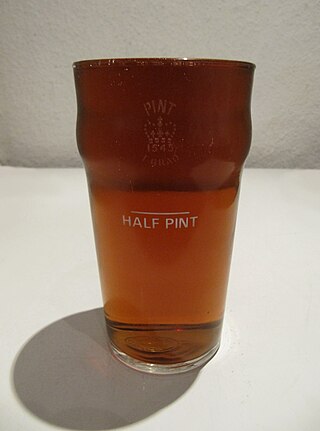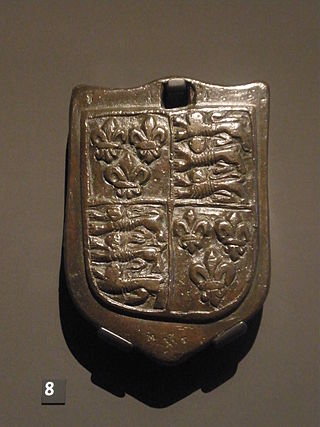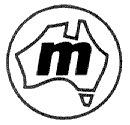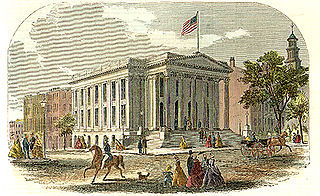Related Research Articles

The gallon is a unit of volume in British imperial units and United States customary units. Three different versions are in current use:

The imperial system of units, imperial system or imperial units is the system of units first defined in the British Weights and Measures Act 1824 and continued to be developed through a series of Weights and Measures Acts and amendments.

Metrication or metrification is the act or process of converting to the metric system of measurement. All over the world, countries have transitioned from local and traditional units of measurement to the metric system. This process began in France during the 1790s, and has persistently advanced over two centuries, accumulating into 95% of the world officially only using the modern metric system. Nonetheless, this also highlights that certain countries and sectors are either still transitioning or have chosen not to fully adopt the metric system.

The pound or pound-mass is a unit of mass used in both the British imperial and United States customary systems of measurement. Various definitions have been used; the most common today is the international avoirdupois pound, which is legally defined as exactly 0.45359237 kilograms, and which is divided into 16 avoirdupois ounces. The international standard symbol for the avoirdupois pound is lb; an alternative symbol is lbm, #, and ℔ or ″̶.

Chinese units of measurement, known in Chinese as the shìzhì, are the traditional units of measurement of the Han Chinese. Although Chinese numerals have been decimal (base-10) since the Shang, several Chinese measures use hexadecimal (base-16). Local applications have varied, but the Chinese dynasties usually proclaimed standard measurements and recorded their predecessor's systems in their histories.

The pint is a unit of volume or capacity in both the imperial and United States customary measurement systems. In both of those systems it is traditionally one eighth of a gallon. The British imperial pint is about 20% larger than the American pint because the two systems are defined differently. Almost all other countries have standardized on the metric system, so although some of them still also have traditional units called pints, the volume varies by regional custom.
The long ton, also known as the imperial ton or displacement ton, is a measurement unit equal to 2,240 pounds (1,016.0 kg). It is the name for the unit called the "ton" in the avoirdupois system of weights or Imperial system of measurements. It was standardised in the 13th century. It is used in the United States for bulk commodities.

The stone or stone weight is an English and British imperial unit of mass equal to 14 pounds (6.35 kg). The stone continues in customary use in the United Kingdom and Ireland for body weight.

The US Metric Association (USMA), based in Windsor, Colorado, is a non-profit organization that advocates for total conversion of the United States to the International System of Units (SI). Founded on 27 December 1916 at Columbia University in New York City, it was originally called the American Metric Association. The USMA publishes a bi-monthly newsletter for its members on the state of the metric system in the United States called Metric Today.

The UK Metric Association, or UKMA, is an advocacy group in the United Kingdom that argues for completion of metrication in the United Kingdom and advocates the use of the metric system among the general public in the UK.
The spread of metrication around the world in the last two centuries has been met with both support and opposition.

Metrication in Canada began in 1970 and ceased in 1985. While Canada has converted to the metric system for many purposes, there is still significant use of non-metric units and standards in many sectors of the Canadian economy and everyday life today. This is mainly due to historical ties with the United Kingdom, the traditional use of the imperial system of measurement in Canada, proximity to the United States, and strong public opposition to metrication during the transition period.

Metrication in Australia effectively began in 1966 with the conversion to decimal currency under the auspices of the Decimal Currency Board. The conversion of measurements—metrication—commenced subsequently in 1971, under the direction of the Metric Conversion Board and actively proceeded until the Board was disbanded in 1981.

Metrication, the process of introducing the metric system of measurement in place of imperial units, has made steady progress in the United Kingdom since the mid-20th century but today remains equivocal and varies by context. Most of government, industry, commerce, and scientific research use the metric system. Imperial units are officially used to specify journey distances, vehicle speeds and the sizes of returnable milk containers, beer and cider glasses, fresh milk is often still sold in multiples of pints, with the metric equivalent also marked, and precious metals are sold by the troy ounce. Metric units must be used when selling other packaged or loose goods, and imperial units can stand alongside the metric units, but it cannot stand out more than the metric units. Imperial units are also often used to describe body measurements and vehicle fuel economy. The national curriculum requires metric units and imperial units that still remain in common usage to be taught in state schools.

Metrication in the Republic of Ireland happened mostly in the 20th century and was officially completed in 2005, with a few exceptions.

New Zealand started metrication in 1969 with the establishment of the Metric Advisory Board (MAB) and completed metrication on 14 December 1976. Until the 1970s, New Zealand traditionally used the imperial system for measurement, which it had inherited from the United Kingdom.
Thoburn v Sunderland City Council is a UK constitutional and administrative law case, concerning the interaction of EU law and an Act of Parliament. It is important for its recognition of the supremacy of EU law and the basis for that recognition. Though the earlier Factortame had also referred to Parliament's voluntary acceptance of the supremacy of EU law, Thoburn put less stress on the jurisprudence of the ECJ and more on the domestic acceptance of such supremacy; Lord Justice Laws suggested there was a hierarchy of "constitutional statutes" that Parliament could only expressly repeal, and so were immune from implied repeal.

Weights and measures acts are acts of the British Parliament determining the regulation of weights and measures. It also refers to similar royal and parliamentary acts of the Kingdoms of England and Scotland and the medieval Welsh states. The earliest of these were originally untitled but were given descriptive glosses or titles based upon the monarch under whose reign they were promulgated. Several omnibus modern acts are entitled the Weights and Measures Act and are distinguished by the year of their enactment.

As of 2009, the European Union had issued two units of measurement directives. In 1971, it issued Directive 71/354/EEC, which required EU member states to standardise on the International System of Units (SI) rather than use a variety of CGS and MKS units then in use. The second, which replaced the first, was Directive 80/181/EEC, enacted in 1979 and later amended several times, which issued a number of derogations to the United Kingdom and Ireland based on the former directive.

The imperial and US customary measurement systems are both derived from an earlier English system of measurement which in turn can be traced back to Ancient Roman units of measurement, and Carolingian and Saxon units of measure.
References
- ↑ "Weights and Measures (Metrication Amendments) Regulations 2009", legislation.gov.uk , The National Archives, SI 2009/3045
- ↑ "BMWA 'Metric Culprits'" . Retrieved 6 February 2009.
- 1 2 3 4 5 Steve Thoburn v Sunderland City Council; Colin Hunt v London Borough of Hackney; Julian Harman and John Dove v Cornwall County Council; Peter Collins v London Borough of Sutton, Divisional court, Queen's Bench Division, 18 February 2002, retrieved 23 August 2010
{{citation}}: CS1 maint: location missing publisher (link). - ↑ "Myths about consumer protection". United Kingdom Metrication Association. Archived from the original on 23 February 2010. Retrieved 7 May 2010.
- ↑ "Market man faces scales of justice". news.bbc.co.uk. BBC. 7 November 2000. Retrieved 6 August 2007.
- ↑ BBC News (11 September 2007). "Bid for 'martyr' pardon continues" . Retrieved 30 November 2020.
- ↑ "Thoburn v Sunderland City Council [2002] EWHC 195 (Admin) (18 February 2002)". Bailii.org. Retrieved 24 November 2014.
- ↑ "Metric martyr market trader dies". news.bbc.co.uk/. BBC News. 14 March 2004. Retrieved 18 December 2015.
- ↑ "1999 No. 3042 – PRICES – The Price Marking Order 1999" (PDF). Office of Public Sector Information. 10 November 1999. Archived from the original (PDF) on 8 August 2009. Retrieved 18 May 2010.
- ↑ "Anger over ban on beer in litres". 6 August 2008. Retrieved 5 January 2020.
- ↑ "Anger over ban on beer in litres". BBC.co.uk. BBC News. 6 August 2008. Retrieved 12 June 2009.
- ↑ Council directive of 20 December 1979 on the approximation of the laws of the Member States relating to units of measurement (80/181/EEC), including amendments up to 2001.
- ↑ Your pint safe in EU hands Archived 8 March 2008 at the Wayback Machine , press release by EU Vice-President Günter Verheugen, Commissioner for Enterprise and Industry, 11 September 2007: "Far from pushing Britain down the metrication road, 'Europe' has always been willing to extend the deadlines, when it discovered practical obstacles and when it realised the UK public felt things were going too far, too fast."
- ↑ "Group claims EU imperial victory". news.bbc.co.uk. BBC. 9 May 2007. Retrieved 6 August 2007.
- ↑ "EDM 2028 IMPERIAL MEASURES AND STEVE THOBURN". edmi.parliament.uk. PIMS. Archived from the original on 10 July 2012. Retrieved 6 August 2007.
- ↑ "MP calls for metric martyr pardon". news.bbc.co.uk. BBC. 27 July 2007. Retrieved 6 August 2007.
- ↑ Hines, Nico (11 September 2007). "EU ends 'pointless battle' to make UK metric". timesonline.co.uk. London: TimesOnline. Retrieved 11 September 2007.
- ↑ Archived 9 March 2008 at the Wayback Machine
- ↑ "Magna Carta". Freemasonry.bcy.ca. Archived from the original on 2 April 2010. Retrieved 17 May 2010.
- ↑ "Department of Trade and Industry: Regulation of weights and measures Thirty-eighth Report of Session 2002–03" (PDF). House of Commons Committee of Public Accounts. 2 July 2003. Retrieved 17 May 2010.